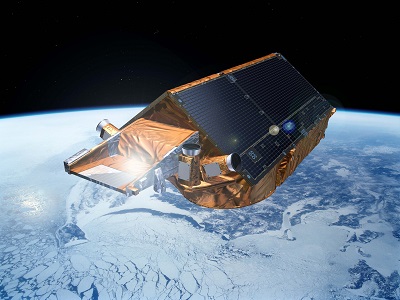- News
- Decades of satellite data reve...
Decades of satellite data reveal the risks of climate tipping points
06 Oct 2022

Decades-long time series that draw on ESA’s Earth observation archives are enabling scientists to uncover the threat of sudden and potentially irreversible changes to the icy parts of the planet.
Fueled by human-induced increases in greenhouse gas emissions, climate warming has been a continuous, gradual process, made up a of a procession of small changes that lead to a long-term shift in environmental conditions.
But evidence is now mounting that the cumulative impact of this incremental warming could trigger dramatic and wide-spread effects on the planet (1).
According to many experts, several elements of the Earth system are inching closer to thresholds of environmental change – known as climate tipping points – that, if crossed, could cause an abrupt shift in systems to a new stable state.
By most definitions of tipping points, these changes are self-propelling and can take far longer to reverse than to occur.
The climate science community is becoming increasingly concerned by this phenomenon, with successive reports from the Intergovernmental Panel on Climate Change revising upwards the risks posed by a host of tipping elements in the Earth system (2,3).
However, urgent research is needed to develop systems to detect and predict when and where these abrupt changes could occur, and to understand the risks they pose to communities and ecosystems worldwide.
Information delivered by satellites will play an essential role in these efforts, having already provided evidence to help identify tipping elements related to many environmental processes, including rapid ice sheet melting, altered ocean circulation, permafrost thawing, and shifts in boreal forest and tropical forest ecosystems.
The icy parts of the planet – known as the cryosphere – are particularly susceptible to these abrupt and dramatic shifts.
Andy Shepherd, professor of Earth observation at the University of Leeds in the UK, said: “The impacts of global warming are often felt first in the cryosphere as it is so finely balanced. Relatively small increases in temperature can lead to the melting of vast amounts of ice, which is difficult to reverse – even if the planet were to suddenly cool.
“There is little doubt that some parts of the cryosphere – including giant glaciers in West Antarctica and ice shelves fringing the Antarctic Peninsula – are already seeing worrying changes that won’t be reversed any time soon.”
Given the key role Earth’s frozen zones have in regulating both global temperature and sea level, these changes will have impacts that are felt across the planet.
In a study published in 2019 (4), Shepherd and his research team combined satellite altimetry data collected over a 25-year period with a regional climate model to reveal increasing ice-losses and spreading instability across West Antarctica.

The research, supported by ESA’s Climate Change Initiative, drew on data from ESA’s ice monitoring CryoSat mission – which launched in 2010 and remains active – as well as ESA Heritage Missions that are no longer operational, including ESA’s European Remote Sensing (ERS-1 and ERS-2) and Envisat satellites.
ERS was operational between 1991 and 2011, with Envisat continuing to deliver data for 10 years after its launch in 2002.
Using their altimeter instruments, these missions collected a wealth of information about the polar ice sheets, and this is being maintained, improved, and made accessible through the Heritage Space Programme.
As part of the research, scientists pieced together a record that spanned 1992 to 2017 by combining Heritage Data with information delivered by CryoSat.
In a separate study, remote sensing experts used satellite imagery to examine changes in the ice shelves of the Antarctic Peninsula over the past 50 years (5), revealing numerous abrupt collapse events during that period.
A long-term analysis that drew on data from several missions – including Envisat – confirmed that 7 out of the 12 ice shelves fringing the Antarctic peninsula have either retreated significantly or have been almost entirely lost, leading to a total reduction in ice-shelf area of more than 28,000 square kilometres since the beginning of the period.
According to Shepherd, future research will continue to monitor changes to the ice in Antarctica, to determine whether its degradation will continue, worsen, or recover.
This is set to help scientists to better understand other tipping elements across the cryosphere and beyond.
References
- Lenton, TM, et al. Climate tipping points — too risky to bet against. Nature 575, 592-595 (2019); doi: https://doi.org/10.1038/d41586-019-03595-0
- IPCC. Global Warming of 1.5°C (IPCC, 2018)
- IPCC. IPCC Special Report on the Ocean and Cryosphere in a Changing Climate (IPCC, 2019)
- Shepherd, A., Gilbert, L., Muir, A. S., Konrad, H., McMillan, M., Slater, T., et al. (2019). Trends in Antarctic Ice Sheet elevation and mass. Geophysical Research Letters, 46, 8174–8183. https://doi.org/10.1029/2019GL082182
- Cook, A. J. and Vaughan, D. G.: Overview of areal changes of the ice shelves on the Antarctic Peninsula over the past 50 years, The Cryosphere, 4, 77–98, https://doi.org/10.5194/tc-4-77-2010, 2010.